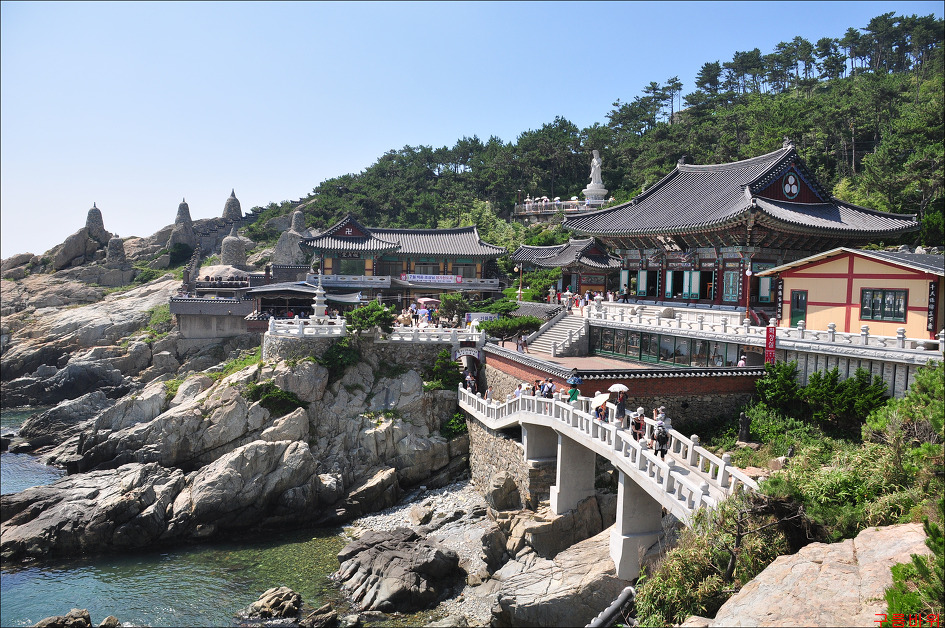


Busan, Korea
The original Haedong Yonggungsa was built in the 14th century AD, but destroyed in the Imjin War - naturally enough, since like the rest of Busan it lay in the path of the Japanese invasion route from across the sea. Today's Haedong Yonggungsa is modern, built in 20th century traditional style. Construction began in the 1930's, and the temple's main hall (photo upper right) was built in 1970.
Most Korean temples are located in the mountains; the coastal situation of Haedong Yonggungsa is unusual for Korea, but more typical for China's southern coast. Familiarity with those temples will help the visitor to understand this one.
The vantage point of this photo is a scenic overlook along the entrance path, that continues and descends across the arched bridge into the temple precincts. Photo left is a rocky outcrop of the Busan coast. The temple's main hall (1970) is the large building, with hip-gabled roof, in the upper right corner of the photo. In front of the main hall (photo center left) is a rail-fenced promontory that encloses a three-story pagoda (said to have been reconstructed from pieces of the original) and a modern bronze statue of two pigs (I have no explanation for that.) In the distance, photo upper left, are several very large stupa-shaped cairns, that also have no good explanation.
On the hillside above the temple there is a statue of Dishui Guanyin, the goddess of the southern sea who is pouring water out of her bottle.

|

|